A Cooperative Automatic Retransmission Request Technique Based on Listening Node Participation Competition
Abstract
:1. Introduction
2. Theoretical Study
2.1. Optimal Relay Node Selection
2.2. Listening Nodes Competing for Signal Retransmission
3. Automatic Retransmission Algorithm Strategy Based on Relay Listening Decoding
4. Simulation Verification
4.1. False Bit Rate and False Packet Rate
4.2. Verification of the Number of Relay Nodes
4.3. Simulation of Retransmission Signal Energy Consumption
5. Conclusions
Author Contributions
Funding
Data Availability Statement
Conflicts of Interest
References
- Li, S.; Li, H.; Yang, Q.; Gaber, J. Hybrid Cooperative Spectrum Sharing Protocols Based on OMA and NOMA in Cognitive Radio Networks. Appl. Sci. 2022, 12, 12683. [Google Scholar] [CrossRef]
- He, J.; Li, J.; Zhu, X.; Xiong, S.; Chen, F. Design and Analysis of an Optical–Acoustic Cooperative Communication System for an Underwater Remote-Operated Vehicle. Appl. Sci. 2022, 12, 5533. [Google Scholar] [CrossRef]
- Chen, G.; Chen, G. A Method of Relay Node Selection for UAV Cluster Networks Based on Distance and Energy Constraints. Sustainability 2022, 14, 16089. [Google Scholar] [CrossRef]
- Shafique, T.; Abdelhady, A.M.; Amin, O.; Alouini, M.-S. Energy Efficiency, Spectral Efficiency and Delay Analysis for Selective ARQ Multichannel Systems. IEEE Trans. Green Commun. Netw. 2018, 2, 612–622. [Google Scholar] [CrossRef]
- Tseng, C.-K.; Wu, S.-H. Selective and Opportunistic AF Relaying for Cooperative ARQ: An MLSD Perspective. IEEE Trans. Commun. 2019, 67, 124–139. [Google Scholar] [CrossRef]
- Yu, Z.; Zhai, C.; Ni, W.; Wang, D. Non-Orthogonal Multiple Access with Cooperative Truncated ARQ and Relay Selection. IEEE Access 2019, 7, 56228–56243. [Google Scholar] [CrossRef]
- Rahman, A.A.; Kahar, M.N.M.; Din, W.I.S.W. Distance based thresholds for 2-tier relay nodes selection in WSN. Comput. Stand. Interfaces 2019, 66, 103359. [Google Scholar] [CrossRef]
- Kim, C.; Kim, S.-H.; No, J.-S. New GRP LDPC Codes for H-ARQ-IR Over the Block Fading Channel. IEEE Trans. Commun. 2020, 68, 6642–6656. [Google Scholar] [CrossRef]
- Xie, M.; Wang, Q.; Gong, J.; Ma, X. Age and Energy Analysis for LDPC Coded Status Update with and Without ARQ. IEEE Internet Things J. 2020, 7, 10388–10400. [Google Scholar] [CrossRef]
- Zhou, Y.; Qian, H.; Wang, Q.; Li, S. Performance Modeling Analysis of D-MSMR-CARQ with Relay Selection in Wireless Sensor Networks. Secur. Commun. Networks 2021, 2021, 5533926. [Google Scholar] [CrossRef]
- Sellami, N.; Siala, M. Semi-blind channel estimation based on modified CMA and unitary scrambling for massive MIMO systems. Telecommun. Syst. 2021, 79, 249–259. [Google Scholar] [CrossRef]
- Rafiee, M.; Sadeghi, R.; Imani, S.M.F. Multi-objective cooperative medium access control protocols in wireless Ad-Hoc networks. Wirel. Networks 2021, 27, 1913–1924. [Google Scholar] [CrossRef]
- Dou, Z.; Tian, J.; Yang, Q.; Yang, L. Design and Analysis of Cooperative Broadcast Scheme Based on Reliability in Mesh Network. Mob. Inf. Syst. 2021, 2021, 5554563. [Google Scholar] [CrossRef]
- Puducheri-Sundaravaradhan, S.; Fuja, T.E. Hybrid-ARQ Protocols Based on Tornado Codes for the Packet Erasure Channel. IEEE Trans. Commun. 2021, 69, 7139–7153. [Google Scholar] [CrossRef]
- Li, J.; Guo, Z.; Ma, H. Development of hybrid ARQ protocol for the quantum communication system on stabilizer codes. China Commun. 2021, 18, 40–48. [Google Scholar] [CrossRef]
- Verma, G.D.; Mathur, A.; Ai, Y.; Cheffena, M. Mixed Dual-Hop IRS-Assisted FSO-RF Communication System With H-ARQ Protocols. IEEE Commun. Lett. 2021, 26, 384–388. [Google Scholar] [CrossRef]
- Farag, M.M.; Ahmed, K.E. Aggregated CDMA Crossbar with Hybrid ARQ for NoCs. IEEE Access 2022, 10, 28206–28218. [Google Scholar] [CrossRef]
- He, Q.; Zhu, Y.; Zheng, P.; Hu, Y.; Schmeink, A. Multi-Device Low-Latency IoT Networks with Blind Retransmissions in the Finite Blocklength Regime. IEEE Trans. Veh. Technol. 2021, 70, 12782–12795. [Google Scholar] [CrossRef]
- Nikolic, T.R.; Nikolic, G.S.; Djordjevic, G.L. Distributed arbitration scheme for on-chip CDMA bus with dynamic codeword assignment. ETRI J. 2021, 43, 471–482. [Google Scholar] [CrossRef]
- Ahmed, A.; Al-Dweik, A.; Iraqi, Y.; Mukhtar, H.; Naeem, M.; Hossain, E. Hybrid Automatic Repeat Request (HARQ) in Wireless Communications Systems and Standards: A Contemporary Survey. IEEE Commun. Surv. Tutor. 2021, 23, 2711–2752. [Google Scholar] [CrossRef]
- Airod, F.E.; Chafnaji, H.; Yanikomeroglu, H. HARQ in Full-Duplex Relay-Assisted Transmissions for URLLC. IEEE Open J. Commun. Soc. 2021, 2, 409–422. [Google Scholar] [CrossRef]
- Nadeem, F.; Shirvanimoghaddam, M.; Li, Y.; Vucetic, B. Delay-Sensitive NOMA-HARQ for Short Packet Communications. Entropy 2021, 23, 880. [Google Scholar] [CrossRef]
- Nadeem, F.; Li, Y.; Vucetic, B.; Shirvanimoghaddam, M. Analysis and Optimization of HARQ for URLLC. In Proceedings of the 2021 IEEE Globecom Workshops (GC Wkshps), Madrid, Spain, 7–11 December 2021; IEEE: Piscataway, NJ, USA; pp. 1–6. [Google Scholar] [CrossRef]
- Khan, F.; Rehman, A.U.; Zhang, Y.; Mastorakis, S.; Song, H.; Jan, M.A.; Dev, K. A Secured and Reliable Continuous Transmission Scheme in Cognitive HARQ-Aided Internet of Things. IEEE Internet Things J. 2021, 8, 14835–14844. [Google Scholar] [CrossRef]
- Shah, S.W.H.; Rahman, M.M.U.; Mian, A.N.; Dobre, O.A.; Crowcroft, J. Effective Capacity Analysis of HARQ-Enabled D2D Communication in Multi-Tier Cellular Networks. IEEE Trans. Veh. Technol. 2021, 70, 9144–9159. [Google Scholar] [CrossRef]
- Nguyen, H.D.; Let, H.D.; Nguyen, C.T.; Pham, A.T. Throughput and Delay Performance of Cooperative HARQ in Satellite-HAP-Vehicle FSO Systems. In Proceedings of the 2021 IEEE 94th Vehicular Technology Conference (VTC2021-Fall), Norman, OK, USA, 27–30 September 2021; IEEE: Piscatevi, NJ, USA; pp. 1–6. [Google Scholar] [CrossRef]
- Park, S. Kalman Filtering Based Combining for MIMO Systems with Hybrid ARQ. IEEE Trans. Signal Process. 2021, 69, 5250–5258. [Google Scholar] [CrossRef]
- Nada, F.A. Service Time Analysis of Go-Back-N ARQ Protocol. In International Conference on Advanced Machine Learning Technologies and Applications; Springer: Cham, Switzerland, 2021; pp. 559–569. [Google Scholar] [CrossRef]
- Chen, G.J.; Wang, Y.J.; Chen, G.F.; Gu, X.L. Research on the Improvement of Relay Selection Algorithm for Cooperative Communication in Cluster Network. In Proceedings of the 2021 International Conference on Electronic Information Engineering and Computer Science (EIECS), Changchun, China, 23–26 September 2021; IEEE: Piscatevi, NJ, USA; pp. 115–118. [Google Scholar] [CrossRef]
- Yu, H.; Joung, J. Secure IoT Communications Using HARQ-Based Beamforming for MISOSE Channels. IEEE Internet Things J. 2021, 8, 17211–17226. [Google Scholar] [CrossRef]
- Zhang, H.; Liao, Z.; Shi, Z.; Yang, G.; Dou, Q.; Ma, S. Performance Analysis of MIMO-HARQ Assisted V2V Communications with Keyhole Effect. IEEE Trans. Commun. 2022, 70, 3034–3046. [Google Scholar] [CrossRef]
- Kaythry, P.; Kishore, R.; Priyanka, V.N. Performance analysis of LT code-based HARQ error control in underwater acoustic sensor networks. J. Mar. Eng. Technol. 2022, 21, 54–64. [Google Scholar] [CrossRef]
- Radbord, A.; Harsini, J.S. Slow and fast adaptive modulation and coding for uplink massive MIMO systems with packet retransmission. IET Commun. 2022, 16, 915–928. [Google Scholar] [CrossRef]
- Shi, Z.; Zhang, H.; Wang, H.; Fu, Y.; Yang, G.; Ye, X.; Ma, S. Block Error Rate Analysis of Short-Packet Mobile-to-Mobile Communications Over Correlated Cascaded Fading Channels. IEEE Trans. Ven. Technol. 2022, 71, 4087–4101. [Google Scholar] [CrossRef]
- Jiang, P.; Wen, C.-K.; Jin, S.; Li, G.Y. Wireless Semantic Communications for Video Conferencing. IEEE J. Sel. Areas Commun. 2022, 41, 230–244. [Google Scholar] [CrossRef]
- Özgün, E.; Aygölü, Ü. Energy harvesting in ARQ-based cooperative broadcast and NOMA networks. Wirel. Netw. 2022, 28, 1–14. [Google Scholar] [CrossRef]
- Arafat, M.Y.; Moh, S. A Q-Learning-Based Topology-Aware Routing Protocol for Flying Ad Hoc Networks. IEEE Internet Things J. 2021, 9, 1985–2000. [Google Scholar] [CrossRef]
- Alam, M.M.; Arafat, M.Y.; Moh, S.; Shen, J. Topology control algorithms in multi-unmanned aerial vehicle networks: An extensive survey. J. Netw. Comput. Appl. 2022, 207, 103495. [Google Scholar] [CrossRef]
- Xuerui, Z.; Li, L. Topology Control Algorithm of UAV Networks based on Routing. In Proceedings of the 14th IEEE Conference on Industrial Electronics and Applications (ICIEA), Xi’an, China, 19–21 June 2019; IEEE: Piscataway, NJ, USA, 2019; pp. 960–964. [Google Scholar] [CrossRef]
- Yoo, T.; Lee, S.; Yoo, K.; Kim, H. Reinforcement Learning Based Topology Control for UAV Networks. Sensors 2023, 23, 921. [Google Scholar] [CrossRef]
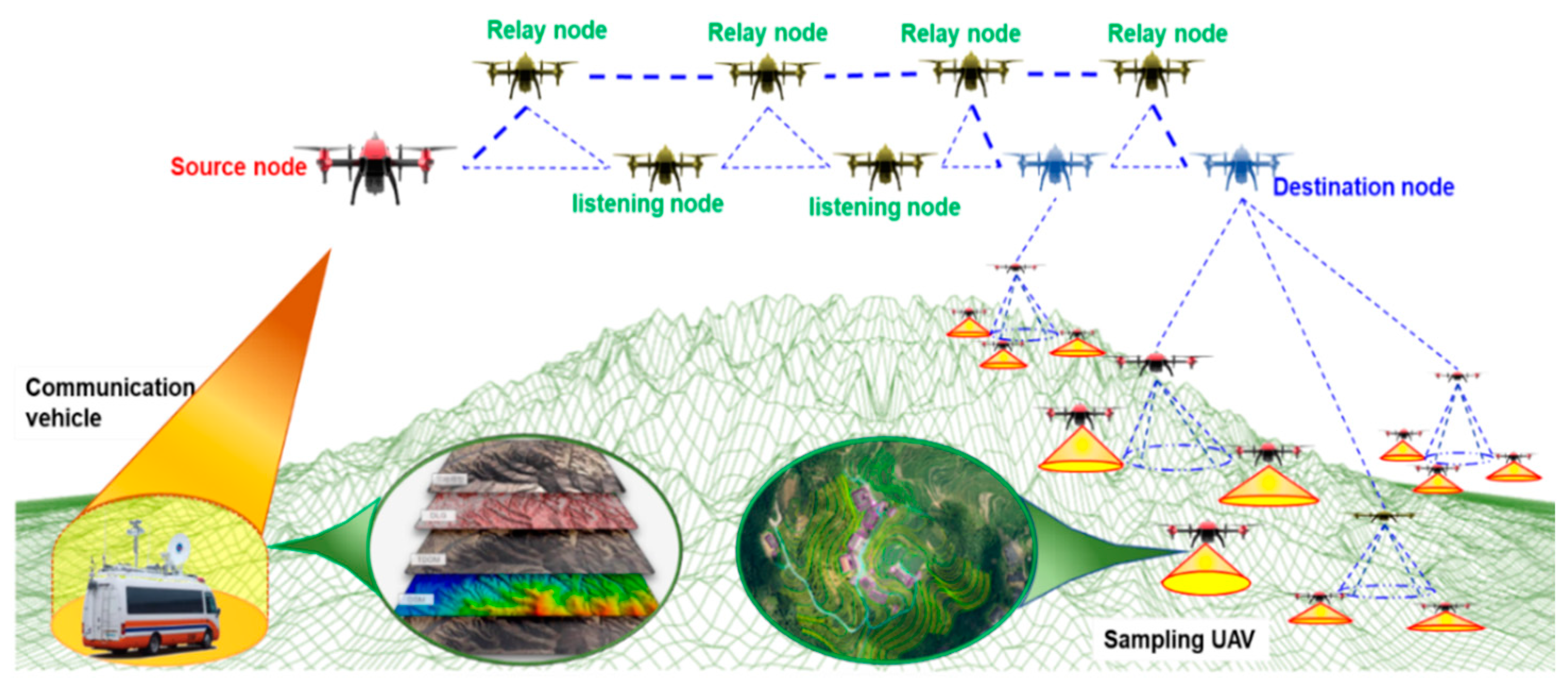

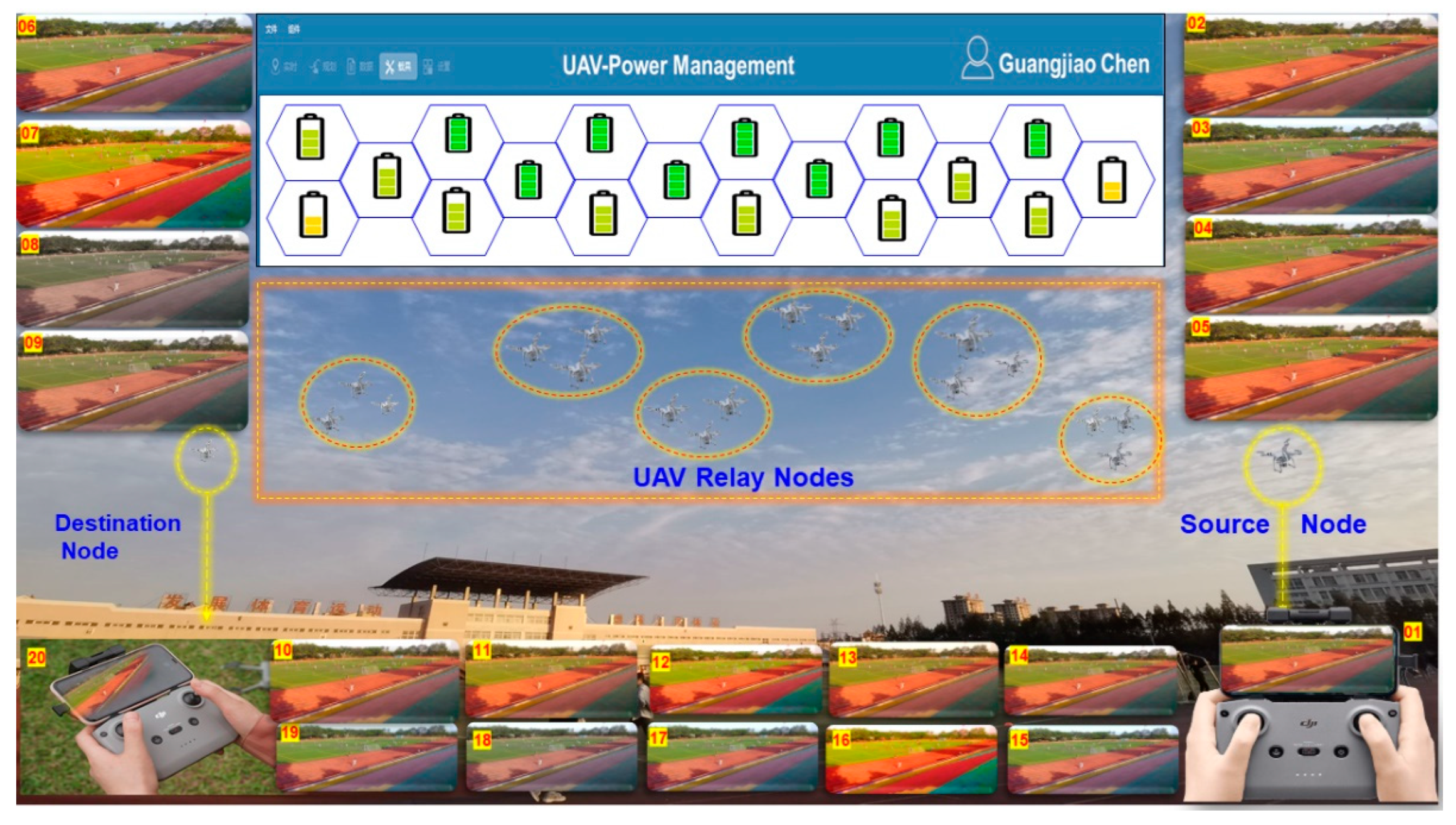
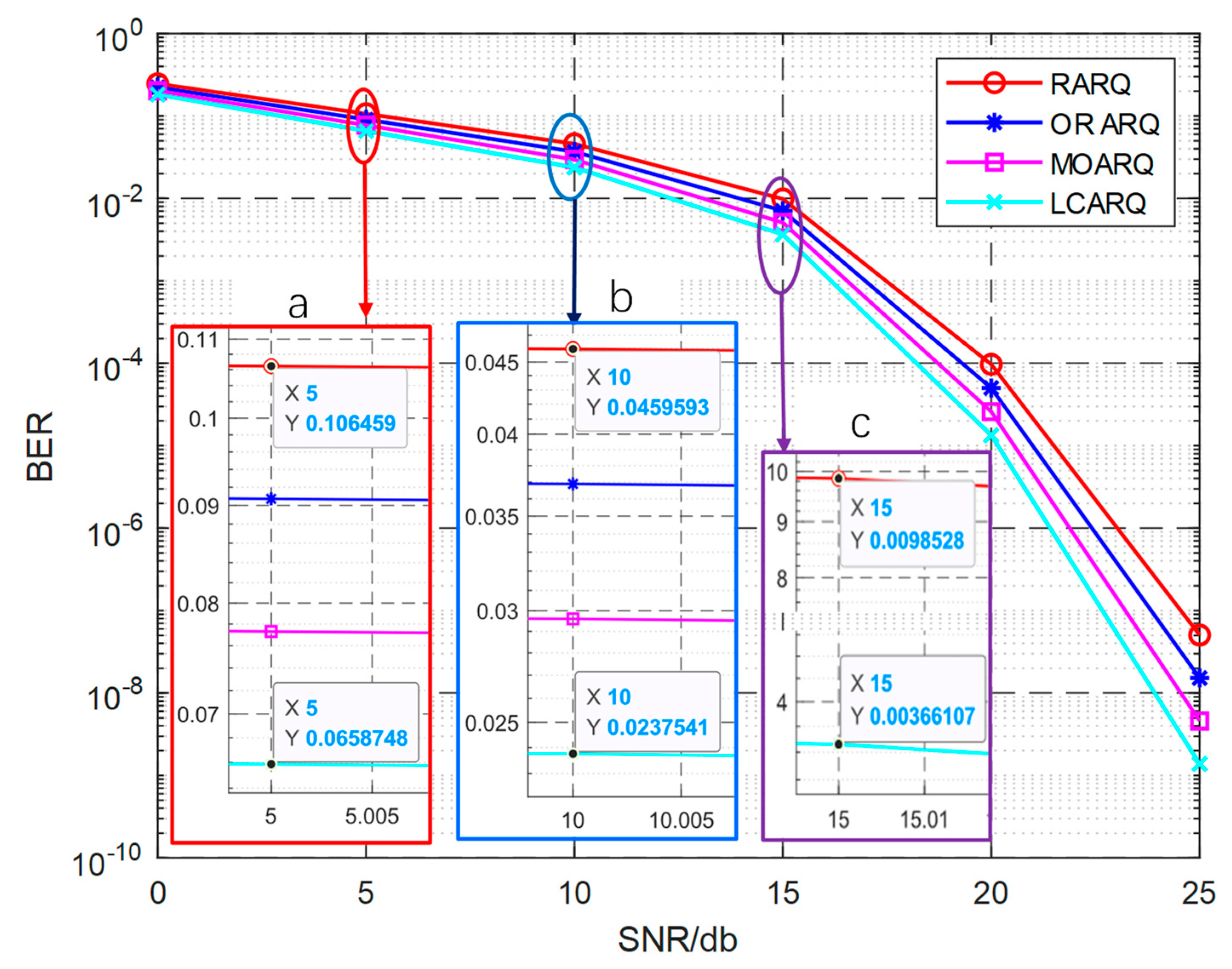
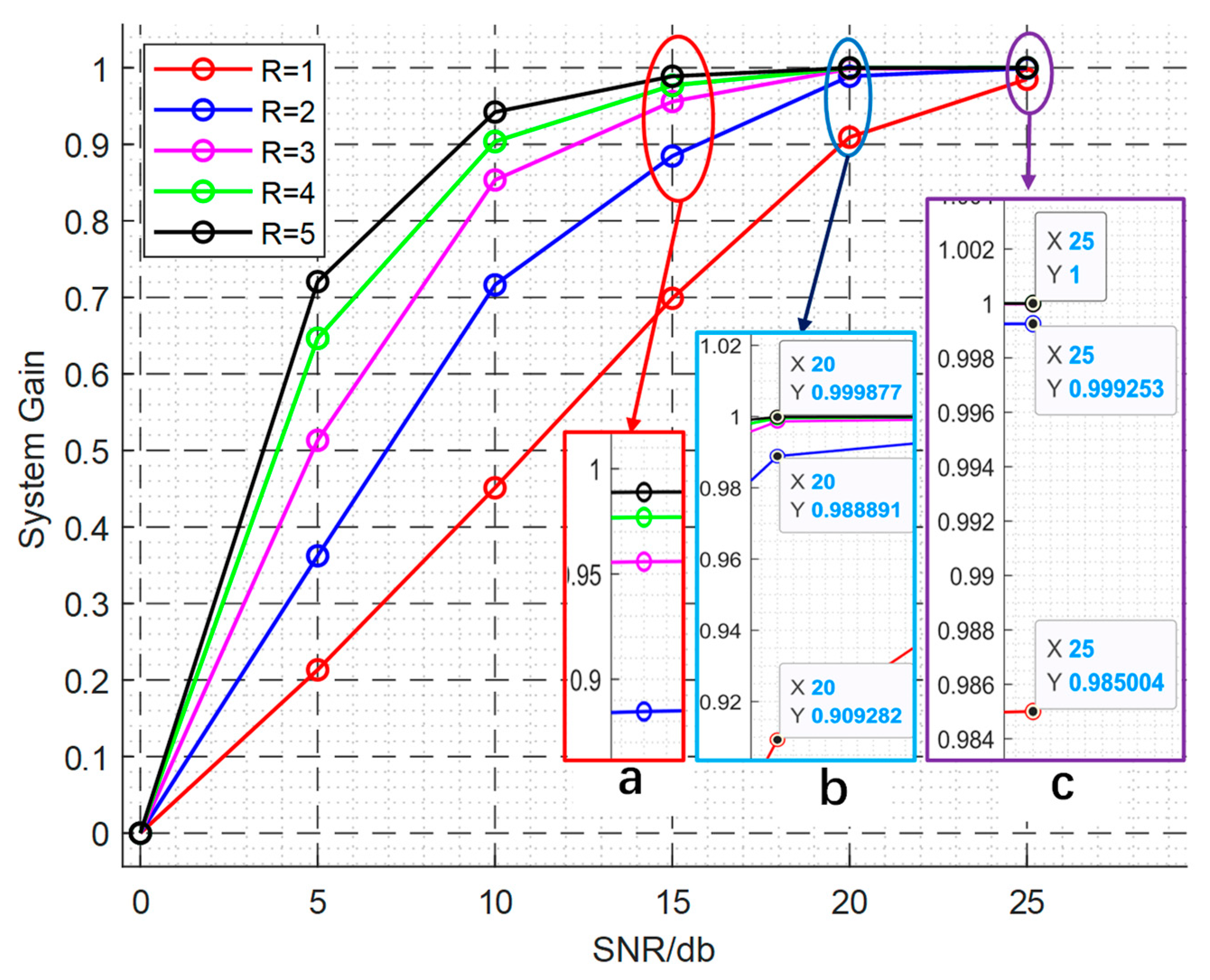
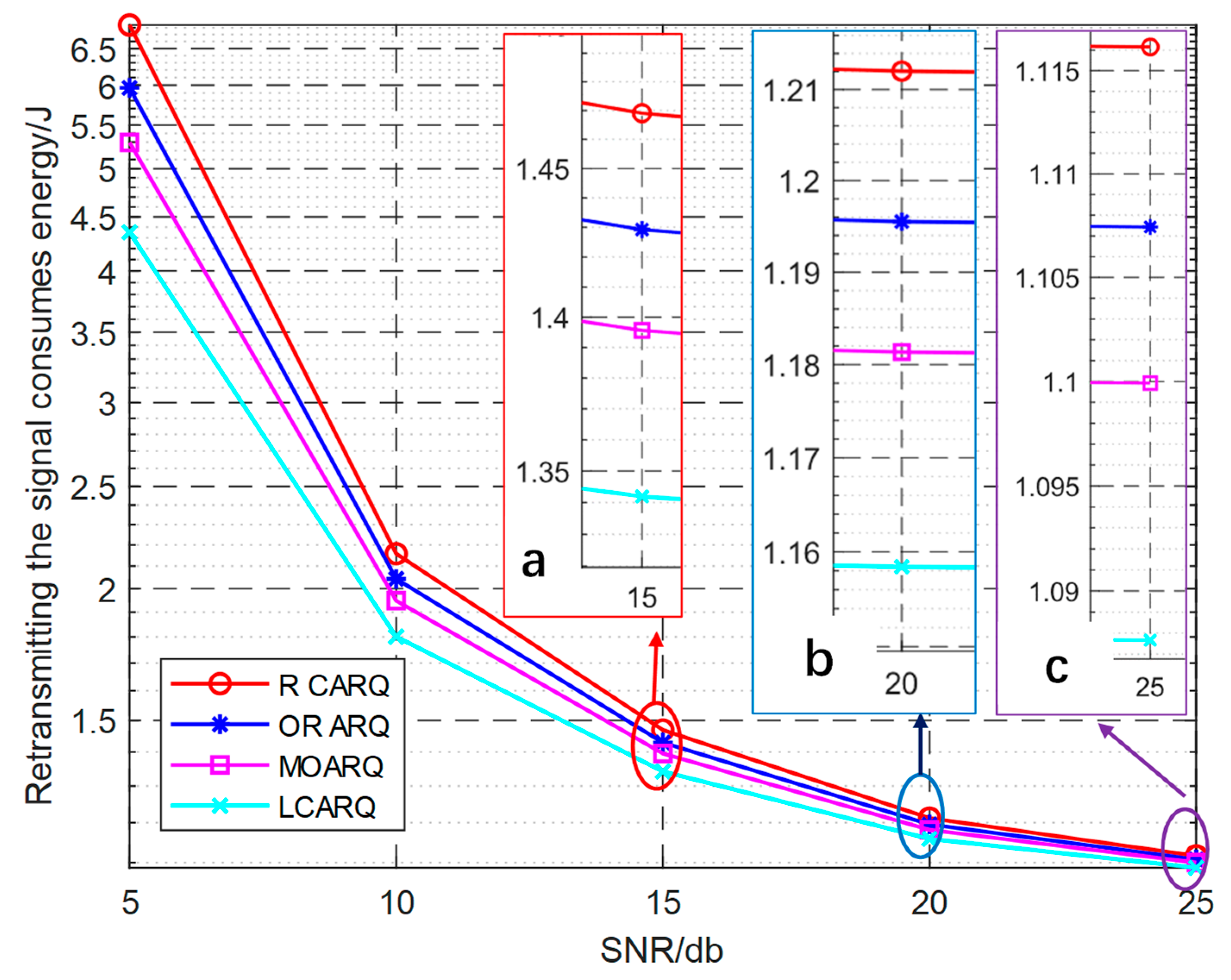
| Innovation Points | Research Content | Lead Author |
|---|---|---|
| Research framework | An automatic retransmission request protocol framework for cooperative communication is proposed. | Van D. Meulen |
| Research model | A relay model with three nodes is proposed. | Cover T |
| Early research | Cooperative communication theory is first introduced into wireless communication network. | Sendonaris |
| [4,5,6,7] | ||
| CARQ research | Random coding, packet and packet communication are proposed to improve the performance of CARQ. | Nasir H |
| [3,9,14] | ||
| Algorithm extension and fusion | Power adjustable, packet communication and other CARQ methods are proposed, K-mean and other methods are integrated into CARQ. | [15,16,17,18,19,20,21,22,23,24,25,26] |
| Cluster communication | A packet multi-relay retransmission strategy is proposed, and data processing and multiplexing techniques are studied. | [27,28,29,30,31,32,33,34,35,36,37,38,39] |
| Input: |
| s denotes the source node, |
| d is defined as the destination node, |
| ri denotes the i-th optimal relay node, |
| Lj denotes the j-th optimal listener node. |
| Output: |
| Forwarding node |
| 1: Cooperative communication divides the nodes into several groups. |
| 2: The source node transmits the signal and the surrounding nodes receive it |
| 3: ri is selected by link quality comparison |
| 4: ri = max(h-link) |
| 5: for i = 1: n |
| 6: the optimal relay node is solved iteratively using Equations (4)–(5). |
| 7: end |
| 8: The ri node failed to forward the signal. |
| 9: Lj listener node is selected. |
| 10: for j = 1:n |
| 11: the optimal relay node is solved iteratively using Equations (6)–(7). |
| 12: end |
| 13: The best forwarding node is determined. |
| 14: Stop broadcasting and keep the link. |
| 15: Return Forwarding node. |
| 16: end |
| Parameter | Parameter Value |
|---|---|
| Network coverage area | 100 m × 100 m |
| Number of UAVs | 20 |
| Signal transmission stage | 2 |
| Broadcast energy consumption | 0.75 J |
| Forwarding energy consumption | 0.5 J |
| Maximum number of rounds | 1000 round |
| System Energy | 100 J |
Disclaimer/Publisher’s Note: The statements, opinions and data contained in all publications are solely those of the individual author(s) and contributor(s) and not of MDPI and/or the editor(s). MDPI and/or the editor(s) disclaim responsibility for any injury to people or property resulting from any ideas, methods, instructions or products referred to in the content. |
© 2023 by the authors. Licensee MDPI, Basel, Switzerland. This article is an open access article distributed under the terms and conditions of the Creative Commons Attribution (CC BY) license (https://creativecommons.org/licenses/by/4.0/).
Share and Cite
Chen, G.; Chen, G. A Cooperative Automatic Retransmission Request Technique Based on Listening Node Participation Competition. Appl. Sci. 2023, 13, 2161. https://doi.org/10.3390/app13042161
Chen G, Chen G. A Cooperative Automatic Retransmission Request Technique Based on Listening Node Participation Competition. Applied Sciences. 2023; 13(4):2161. https://doi.org/10.3390/app13042161
Chicago/Turabian StyleChen, Guangjiao, and Guifen Chen. 2023. "A Cooperative Automatic Retransmission Request Technique Based on Listening Node Participation Competition" Applied Sciences 13, no. 4: 2161. https://doi.org/10.3390/app13042161
APA StyleChen, G., & Chen, G. (2023). A Cooperative Automatic Retransmission Request Technique Based on Listening Node Participation Competition. Applied Sciences, 13(4), 2161. https://doi.org/10.3390/app13042161






